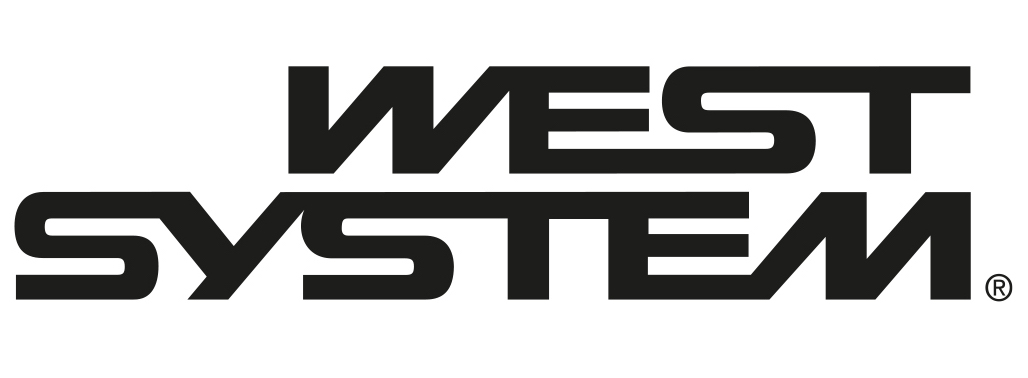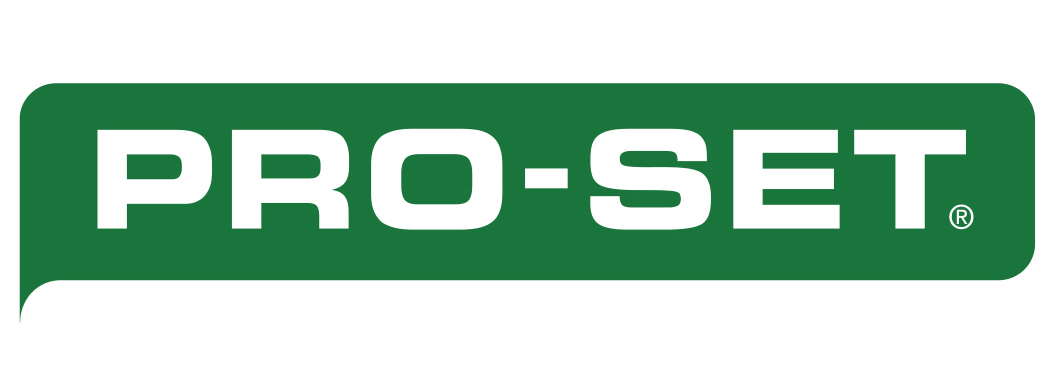Screws and other threaded fasteners can be installed with WEST SYSTEM® epoxy to dramatically improve the load carrying capacity of the fastener and effectively the strength of a joint.Various pieces of hardware, like fasteners and studs, can be used to give extra support to a joint bonded using WEST SYSTEM epoxy. This is because they spread the load into a greater area of the substrate or foundation. The type of hardware or technique you will use depends on the load that will need to be carried.This page covers:
Basic fastener bonding technique
Advanced fastener bonding technique
Bonding hardware
Casting a base
Bonding studs: an alternative to bolts or screws
Removing fasteners
Basic fastener bonding technique
The basic fastener bonding technique involves simply wetting out stripped fastener holes and new pilot holes before installing the screws. This improves pullout strength and eliminates moisture ingress. Epoxy penetrates the fibre around the hole, effectively increasing the fastener diameter.
1. Wet out a standard-size pilot hole
Work the resin/hardener mix into the hole with a pipe cleaner or syringe. You may need to thicken a second coat of epoxy as necessary for stripped or oversized holes.
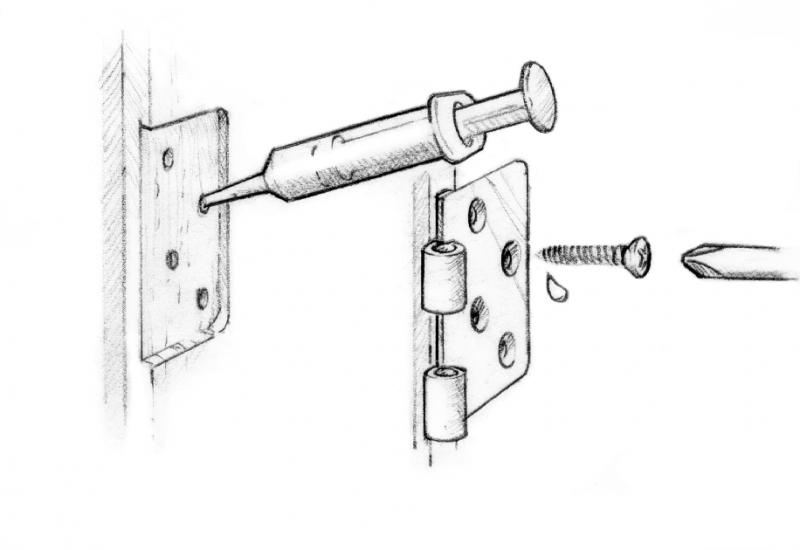
Drill oversized holes to increase the exposed substrate area and the amount of epoxy around the fastener.
2. Insert the fastener in the hole and allow the epoxy to cure
Advanced fastener bonding technique
If you require greater strength and stability in the joint, drill oversized holes to increase the exposed substrate area. This, in turn, increases the amount of epoxy around the fastener. If the fastener or hardware can be clamped by other means, the oversized hole can be extended to the end of the fastener.
1. Drill oversized holes
Each hole should be approximately two-thirds the depth of the fastener. The hole diameter should be 6mm larger than the fastener diameter.
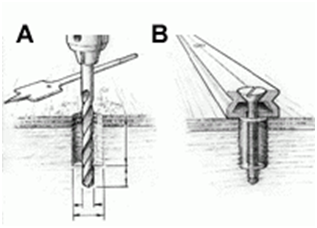
Drill an oversized hole that’s 6mm wider than the fastener.
2. Drill normal sized pilot holes
Drill each of these pilot holes at the bottom of the oversized hole to the full length of the fastener. The normal sized pilot hole serves to hold or clamp the hardware in position until the epoxy cures.
3. Wet out the holes and the fastener with a resin/hardener mix
Allow the epoxy to thoroughly soak into the exposed end grain of the wood.
4. Fill the hole with thickened epoxy
Remember, thickened epoxy is an epoxy mix of resin, hardener and filler. The best WEST SYSTEM filler to use is 404 High-Density or, alternatively, 406 Colloidal Silica.
5. Install the fasteners
Insert each fastener with just enough force to hold the hardware in place. Allow the epoxy to cure thoroughly before applying the load to the hardware.
Bonding hardware
Bonding hardware goes much further than just bonding the fasteners. By bonding the hardware base to the surface, the hardware load capacity is significantly increased by providing a solid bearing surface for the hardware. It also seals the wood underneath and is a stronger, longer lasting attachment than bonding the fasteners only. It is especially useful to mount hardware on surfaces which are not level, curved or uneven.
1. Prepare the surfaces
This will ensure that the mounting surface and the hardware base will adhere well.
2. Wet out the oversized hole with epoxy
Allow the epoxy to soak into the exposed end grain of the wood, as with fastener bonding.
3. Coat the bottom contact surface of the hardware with epoxy
The epoxy you use for this should be unthickened. Use a wire brush or 50-grit sandpaper to apply the wet epoxy into the surface. Sanding the epoxy-coated base exposes the epoxy directly to fresh metal avoiding any oxidisation of the metal.
4. Inject a non-sagging thickened epoxy mix into the hole
This mix should contain WEST SYSTEM fillers 404 or 406. Use a sufficient amount of mix to ensure that there are no voids in the hole after inserting the fastener. Coat the bottom of the hardware and the fastener threads with thickened epoxy.
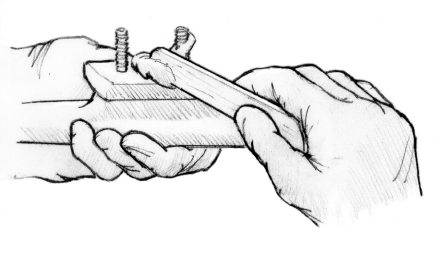
Coat the hardware bottom and the fastener threads with thickened epoxy.
5. Place the hardware in position
Insert the fasteners and tighten them until a small quantity of mix squeezes out of the joint.
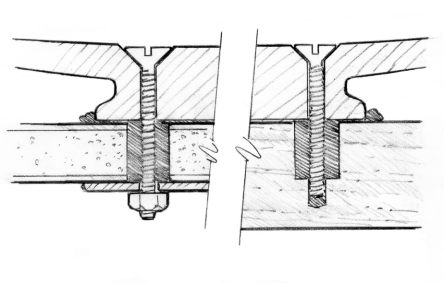
Tighten the fasteners until a small amount of epoxy squeezes from the joint.
6. Remove any excess epoxy or shape into a fillet
Allow the epoxy to cure for at least 24 hours at 15°C minimum before applying load to the hardware. Allow more time for this stage of the process in cool weather.
Casting a base
This process is suitable if you are mounting hardware to a curved or uneven surface or mounting hardware at an angle to the surface. Use thickened epoxy to cast a base under the hardware in these circumstances.
1. Prepare the fasteners, holes, substrate and base
Follow the appropriate instructions outlined in the basic and advanced fastener bonding techniques sections on this page.
2. Bond small blocks to the substrate
This will support the base at the desired height and position. See the winch base in diagram (a).
3. Apply thickened epoxy
Ideally the thickened epoxy should be of a non-sagging, peanut butter consistency. Use it to fill the volume below the required position of the hardware to a level marginally higher than the blocks. If the gap between the base and the surface is over 12mm, fill the gap in two separate layers to avoid ‘exotherming’, or heating up.
4. Place the hardware in position
It should rest on the blocks and install the fasteners. See diagram (b).
5. Smooth the excess epoxy into the desired fillet shape around the base
See diagram (c). Allow the epoxy to cure fully before loading. To protect exposed epoxy from UV damage, apply a finish coating.
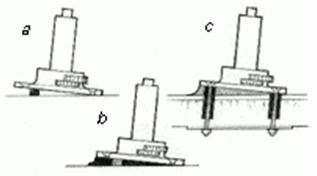
Support the base in position with blocking – apply enough thickened epoxy to fill void.
Bonding studs: an alternative to bolts or screws
Instead of using bolts or screws, you can bond threaded rods or studs into the substrate and attach the hardware with nuts. This variation is appropriate for many engine, motor or machine installations. Coat the base of the hardware with wax/mould release to make it removable. Although the hardware is not ‘bonded’ to the substrate, the epoxy still provides a bearing surface that perfectly matches and supports the base of the hardware.
1. Prepare the studs or threaded rods
Do this by waxing the upper ends (above the surface) and cleaning the lower ends (below the surface).
2. Place a nut and washer on the studs
Make sure you have wet out the lower ends then push them into the epoxy filled holes. Allow the epoxy to cure thoroughly before attaching the hardware and tightening the nuts.
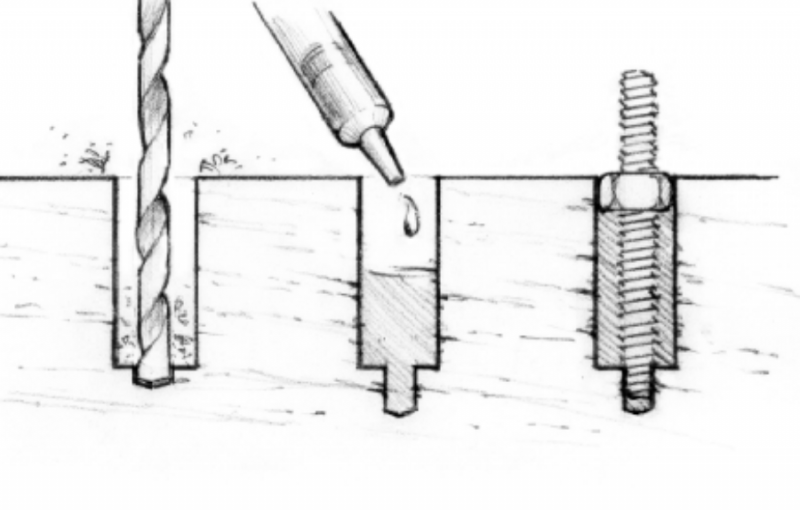
Bond threaded rods or studs into the substrate as an alternative for easily removable hardware.
Removing fasteners
If you know that you will need to remove a fastener at a future date, coat the threads with wax or mould release. The purpose of this is to ‘contaminate’ the surface sufficiently to prevent a good bond.
If you need to remove a fastener that has been permanently bonded, apply heat to the head of the fastener with a soldering iron or propane torch. It’s a good idea to use a heat shield to protect the surrounding area. Heat will travel down the fastener and will soften the epoxy it comes into contact with. After this heating, the epoxy should soften enough to allow you to back out the fastener. Allow more time for heat to travel along longer fasteners and fasteners with a larger diameter fasteners.
